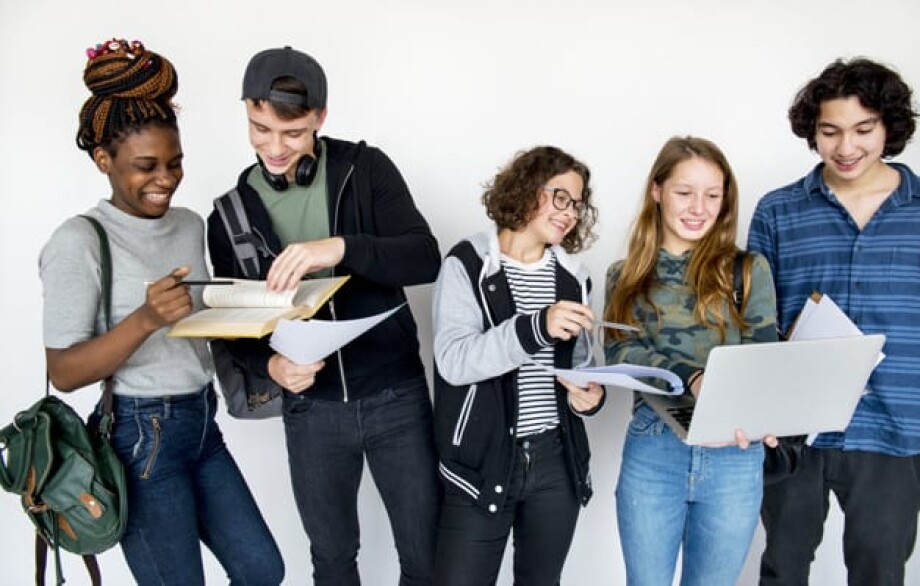The days of students silently working independently from textbooks at desks are gone! It’s time for 21st Century Skills which include collaboration along with critical thinking, communication and creativity. In the future, our students will be looking for work in this global workplace and collaboration skill will enhance their prospects for employment and job advancement.
Here are great activities to foster an environment of collaboration in your lessons.
What is a good collaboration?
- ability to manage a team and work as part of one;
- identify when and how to share ideas;
- demonstrate flexibility and the ability to compromise;
- conflict resolution;
- task management;
- respectful communication with all team members.
How can you teach students to collaborate?
1. Set cooperative learning, include pair work, group work, collaborative and creative projects in your lessons. When students work with each other they have to collaborate, delegate tasks, make decisions, discuss and agree or disagree on content. Moreover, it develops learner autonomy as they need to research, select relevant information, prepare and present materials.
Always rotate groups and vary who students work with so that they can gain experience working with different types of individuals and teams.
2. Assign different roles to students when working in groups, so that everyone gets a chance to try every role (a leader, a moderator, a timekeeper, a designer, etc.). Allow students to choose which of the defined roles in a task they would like to play and students will demonstrate desirable collaboration behaviors: the artistic students can demonstrate their creativity and students with strong digital literacy skills may find the information quickly and effectively. But also encourage them to practise playing different roles. Students may even discover their strengths in certain positions which they have never thought about before.
3. Do team building activities at the beginning of a course, each school term or even as a break during the lesson. These activities help to break the ice and make students feel more comfortable with their classmates. Add an element of team competition to your classes to motivate teenage learners. Use quizzes, quests, scavenger hunts and so on.
4. Practise jigsaw skills. These activities combines collaboration and communication with language skills work. In a jigsaw reading or listening, students are given different parts of a text, which come together to form a whole. Their task is to work together to find out the information the other members of their group have in order to be able to answer comprehension questions or form an overall understanding of the topic.
5. Dive into a Fishbowl. Fishbowl is a teaching strategy that lets students practise being both a speaker and a listener in a discussion. Form two circles with student desks, one inside the other. The conversation begins as students on the inside circle of the Fishbowl respond to a teacher-provided prompt. The first group of students asks questions, expresses opinions and shares information, while the second group of students, on the outside of the circle, listens carefully to the ideas presented and observes the process. Then the roles reverse. This strategy is especially helpful for modeling and reflecting on what a “good discussion” looks like, for making sure that no one is left out of the conversation, and for providing a structure for discussing controversial or difficult topics.
6. Try brainwriting. Brainstorming is a common element of collaborative learning. The general principle of brainwriting is that idea generation should exist separate from discussion—students write first, talk second. When a question is introduced, students first brainstorm on their own and write down their ideas on sticky notes. Everyone’s ideas get posted on a wall, with no names attached. The group then has a chance to read, think about and discuss all of the ideas generated. This technique provides a level playing field for the best ideas to surface as students combine, tweak and come up with original, higher-level solutions.
7. Try storytelling game. Form students into a circle and give each a unique picture of a person, place or thing. The first student begins a story that incorporates whatever happens to be on their assigned photo. The next student continues the story, incorporating their photo, and so on.
8. Build trust, promote open communication and positive attitude to each other. Building trust is essential for a successful interpersonal communication. Deal with emotional issues that arise immediately and any interpersonal problems before moving on. When tackling difficult concepts, group learning may provide a source of support. Groups often use humor and create a more relaxed learning atmosphere that allow for positive learning experiences. Allow groups to use some stress-reducing strategies as long as they stay on task.
What activities do you use to foster teen collaboration?






 Вероника Аветисян
Вероника Аветисян 
 Маргарита Аветисян
Маргарита Аветисян 


